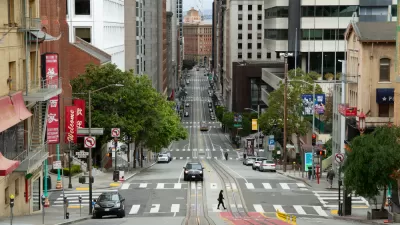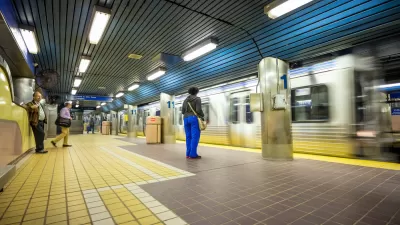Planetizen Managing Editor James Brasuell tries to predict the big ideas and trends that will dominate the discussion about the future of land use, planning, and development in the first year of the new decade.
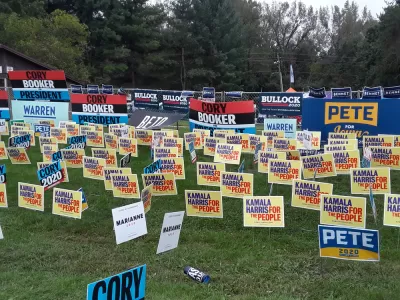
[Updated January 9]
Predicting the future is hard—if it were easy, there'd be a lot more security and prosperity, and a lot fewer problems, in the world. Las Vegas would be different. If predicting the future were easy, there'd be less reason to follow up every Elon Musk statement involving tunnels and traffic with a list of reasons for skepticism. If predicting the future were easy, everyone would do it.
And yet, an understanding of a desired future, and a grasp of the tools that can make a desired future a reality, is precisely the job of planners.
Planners must always keep one eye toward history, one on the present, and one eye toward the future. Again, if it were easy, everyone would do it.
Before looking at some of the urban planning trends to watch in 2020, the "Urban Planning Trends to Watch in 2019" post is worth a quick look for lessons in how the world of planning and development changed over the course of the past year, and how the world of planning arrived at this threshold of a new decade.
In 2019 we grouped expected trends under the categories "Land Use Regulations and the Crises of the Era," "Can Multi-Modalism Rebound?" and "Mega-Projects Meet the Tech Industry." Here are a few indications of how those trends fared in the final year of the decade.
Land Use Regulations and the Crises of the Era – In 2019, we watched as entire states moved forward with historic preemption of local exclusionary zoning rules, led first and most tangibly by Oregon. California, Virginia, and Maryland all start 2020 in the midst of legislative debates about how to allow for more density in residential neighborhoods.
The Green New Deal, which seemed like a swing and a miss for land use regulation reform, failed to achieve the political will necessary to stay relevant for much of 2019. Meanwhile, various arms of the Trump administration continued to mobilize against existing environmental regulations, closing the decade by teasing unprecedented actions to overhaul federal environmental review and homelessness policies. The Trump administration's proposed changes to the National Environmental Policy Act, which would limit the powers of environmental review for large projects, bears striking resemblance to actions of the California State Legislature during the Schwarzenegger administration, when it passed a law to expedite environmental review for stadium developments. When it comes to climate change and affordable housing, crisis is in the eye of the beholder (or the holder of power, or the holder of purse strings).
Can Multi-Modalism Rebound? – Americans didn't spend 2019 finally getting out of their cars and into more active, efficient modes of transportation. Traffic fatalities continue to worsen for the most vulnerable users of the public right of way (pedestrians and people on bikes), and the findings of analyses from both the beginning and end of the year indicate that the potential for walking and biking to break through car culture remains unfulfilled. The surprising popularity of electric scooters persisted at the end of 2019, but so too did the legal and regulatory controversies that follow the scooters wherever they go. At the beginning of 2020, it's still not clear if scooters are a gateway mode to alternative transportation or on the final of 15 minutes of fame.
Mega-Projects Meet the Tech Industry – The headlining story from this category of urban planning trends is the ongoing Sidewalk Labs development of a section of the waterfront in Toronto. There, Google's sister company had a big year, releasing its first draft of its master plan for Quayside, facing its first public hearing for the project proposal, and subsequently reducing the size of that proposal. So-called "smart city" technology raises controversy in more cities than Toronto, as questions persist about data privacy, surveillance, and the viability of technologies—despite the support of tech billionaires and encouragement by credulous political leaders. Only one thing is clear: there will be more "smart city" utopias proposed in the next decade: the close of 2019 included a pitch for a "futuristic mini city" in Las Vegas, and the beginning of 2020 has already produced a plan by Toyota to build a prototype city of the future at the base of Mt. Fuji in Japan.
No Cars Allowed
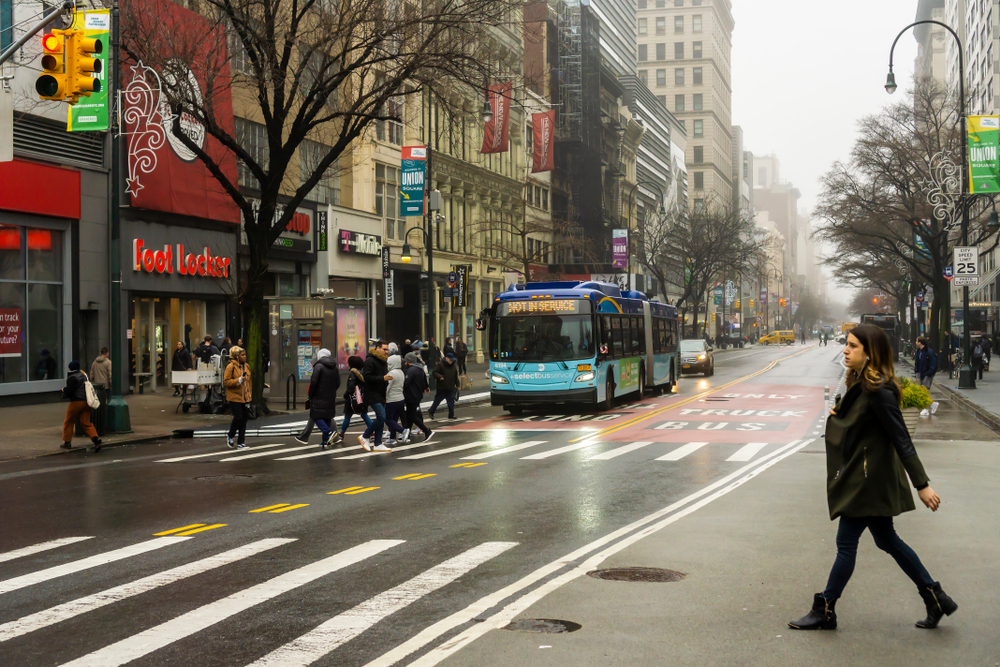
The avant-garde of North American cities prioritizing alternative forms of transportation over cars has arrived.
- In April 2019, Toronto permanently blocked cars from a section of King Street, turning control of the corridor over to the streetcar, after ridership soared in the initial experiment.
- The surface of the most transit-developed city in the United States (New York, of course) is still a mess with cars (including the mayor's entourage), but an impending congestion pricing scheme and the recent makeover on 14th Street in Manhattan that blocked cars from the busy street, represent some of the most tangible progress against the car-centric status quo anywhere in the United States.
- In San Francisco, the city doubled down on a $604 million redesign of Market Street, the main arterial in the city's downtown, and announced a plan to block private automobiles from the street (including Uber and Lyft).
- Los Angeles scored social media and public relations wins by showing footage of its Flower Street bus only lane—an experiment made possible by the temporary closure of one the country's busiest light rail lines. Buses flying by cars stuck in traffic can generate fuzzy feelings in any transit and complete streets advocate, not to mention climate change warrior, but the feelings were less positive after the debut of a new automobile traffic control regime at the Los Angeles International Airport. By blocking private cars and ride-hailing services from the city-owned airport's central terminal area, Los Angeles joined the ranks of cities taking a lead in prioritizing efficient modes of transportation in the most congested corners of cities. Whether the city holds that position is likely to be determined by public opinion, political will, and the planning success of a new light rail line and people mover connecting to the airport in time for the 2028 Summer Olympics.
A common theme in the experiences of New York City and Toronto was the failure of apocalyptic warnings about the consequences of overthrowing the car-centric status quo. Whether more cities will pick up on that lesson and marshal the political will to implement more examples of transit priority for the sake of congestion and pollution mitigation, as well as economic mobility and social justice will be a big question to watch in 2020. The avant-garde could transition to the mainstream, or the vocal opposition to such plans could obstruct developments and dismantle the early examples of success.
More examples of transit priority over cars are on the way in 2020. The Rose Lane Vision in Portland, Oregon is already promising to expand the next frontier in the trend of transit-centric planning. A prominent writer in Philadelphia is already following the lead of New York City in pressing for streets to be cleared of cars for the sake of public transit service. The city of Chicago is planning to add camera enforcement to bus lanes on Chicago and Western avenues as part of the Bus Priority Zones program announced in 2019. All these efforts will be empowered by new permission for bus lanes from the federal government.
Fare-Free and Fare-Lite Public Transit
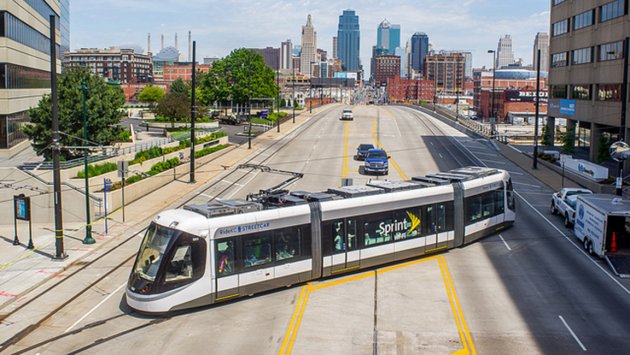
Kansas City is leading another version of this shift in priority toward more efficient modes of transportation, by approving a program to make transit fares free throughout the entire city. Already, Miami-Dade County officials have expressed interest in becoming the next jurisdiction to cover the costs of public transit for riders, and urbanism media is starting to ask if the fare-free movement could gain momentum on a national scale. Similar causes, like reducing fares for low-income riders, have attracted both increasing levels of advocacy and numerous successes in recent years—in New York City, Denver, the Twin Cities, and the San Francisco Bay Area, for instance. Detroit took a different approach in lowering the cost of transit ridership by eliminating transfer fees between DDOT and SMART buses in April 2019. According to an article published by PlanPhilly at the time, Detroit's move inspired a Philadelphia city councilmember to seek a similar program for SEPTA riders.
2020 will provide almost every city in the United States a chance to consider whether to follow the lead of these cities and walk the talk on congestion and pollution by making it cheaper and easier to ride public transit. The debate is worth having—as many transit advocates have responded to the recent developments in fare reductions by pointing out the sacrifices that spending more money on fares will require—potentially in frequency of service and the coverage of routes. Planetizen blogger Steven Polzin anticipated the contemporary debate and laid out a cost-benefit analysis of fare reduction programs following the approval of the Fair Fare NYC low-income fare program implemented by New York City in 2018.
Sprawl and Urbanism Compete in the Southwest
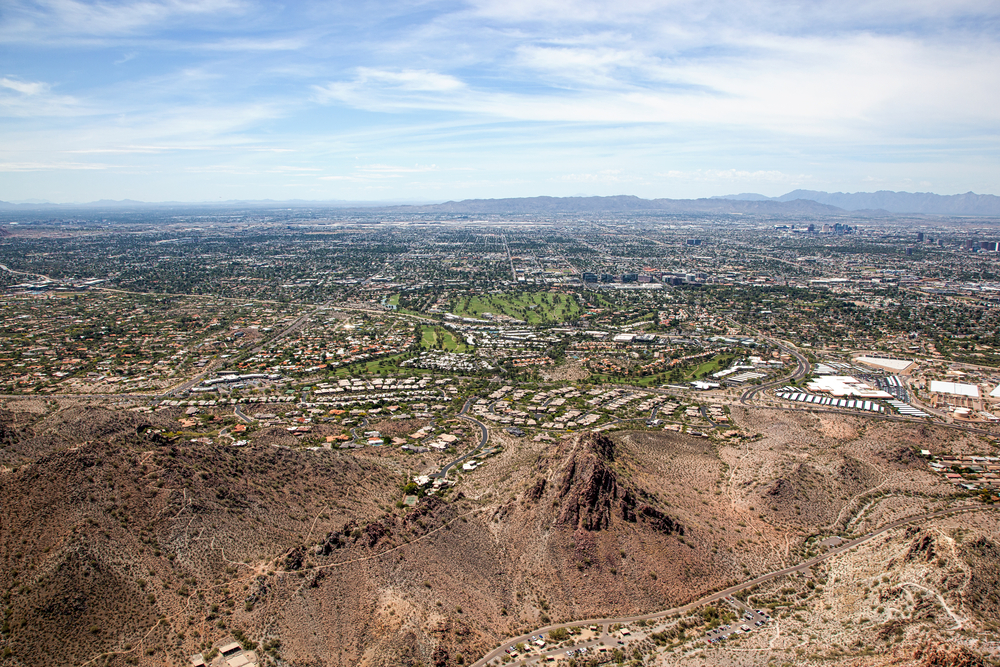
Don't look now, but Arizona is picking up right where it left off with the Great Recession, and quickly sprawling into previously untouched parts of the desert. Sprawling developments made news in 2019 in Phoenix (with another example from Phoenix), Tucson, and the Grand Canyon. Discussions of when, not if, the Phoenix and Tucson regions would merge into a single megalopolis are once again taking place, after a slight pause for the Great Recession. Questions about water loom over the latest wave of sprawl spreading across the state, both because of Trump administration's actions to repeal the Waters of the United States Rule and because of the new era of western water management harkened by the ratification of the landmark Colorado River Drought Contingency Plan (the latter is a relevant storyline for Las Vegas sprawl as well). The wet outlier provided by the 2018-19 rainy season does not mean that drought won't return to the Southwest. In fact, drought is the safest bet of any of the predictions included here.
The story about the future of Arizona isn't just playing out on the periphery. The urban cores of the state, Phoenix and Tucson, are contesting the viability of urbanism and are likely to continue to face more difficult questions about the future as housing prices continue to rise in the region. On one hand, the mayors of Phoenix and Tucson agreed to stay in the Paris Climate Agreement, developers in Tempe are planning a car-free multi-family residential development, Phoenix planners are allowing new height and density, and Phoenix developers are responding (with another example from Phoenix). Voters have also repeatedly taken a stand to support transit initiatives in Phoenix, despite victories by anti-transit city council members and Koch-backed anti-transit initiatives. Phoenix's anti-urban actions don't bode well for urban planning paradigms in one of the most environmentally vulnerable regions of the United States, but this story is far from finished.
Playing Politics with Homelessness

One of the biggest potential stories looming over the early days of 2020 is the possibility that the Trump administration could take drastic, punitive action against West Coast states on the issue of homelessness. On December 20, 2019, the U.S. Department of Housing and Urban Development released a teaser of homeless data to come—pinning the blame for the nation's increasing numbers of homeless on "significant increases in unsheltered and chronic homelessness on the West Coast, particularly California and Oregon." President Trump picked up the theme again with a tweet on January 6, blaming Democratic Party leadership for the homelessness challenges in California cities. California Governor Gavin Newsom responded in the press, accusing the president of making misleading claims and only mentioning homelessness to create division and controversy and to "demagogue the issue."
Potentially pressuring the president toward drastic action is a recent Supreme Court decision not to hear an appeal of the case Martin v. Boise, which protects the right of homeless people to sleep in public when and where no shelters are available. Los Angeles Times reporter David G. Savage describes the Supreme Court's decision not to hear the case as a "setback for city officials in California and other western states who argued the appeals court ruling undercut their authority to regulate encampments on the sidewalks."
The Trump administration won't be alone in responding to the legal precedent set by Martin v. Boise, and reluctant cities all over the country, including those with ostensibly liberal political leadership, will be forced to figure out how to navigate the minefield of public opinion, very real concerns about public health, and attacks from opposing political parties to reduce the human rights crisis unfolding every day on the streets of every city in the country. The name of the court case isn't Martin v. Los Angeles, after all. Lives hang in the balance—remembering that would be a start toward progress.

Planetizen Federal Action Tracker
A weekly monitor of how Trump’s orders and actions are impacting planners and planning in America.

Map: Where Senate Republicans Want to Sell Your Public Lands
For public land advocates, the Senate Republicans’ proposal to sell millions of acres of public land in the West is “the biggest fight of their careers.”

Restaurant Patios Were a Pandemic Win — Why Were They so Hard to Keep?
Social distancing requirements and changes in travel patterns prompted cities to pilot new uses for street and sidewalk space. Then it got complicated.

Platform Pilsner: Vancouver Transit Agency Releases... a Beer?
TransLink will receive a portion of every sale of the four-pack.

Toronto Weighs Cheaper Transit, Parking Hikes for Major Events
Special event rates would take effect during large festivals, sports games and concerts to ‘discourage driving, manage congestion and free up space for transit.”

Berlin to Consider Car-Free Zone Larger Than Manhattan
The area bound by the 22-mile Ringbahn would still allow 12 uses of a private automobile per year per person, and several other exemptions.
Urban Design for Planners 1: Software Tools
This six-course series explores essential urban design concepts using open source software and equips planners with the tools they need to participate fully in the urban design process.
Planning for Universal Design
Learn the tools for implementing Universal Design in planning regulations.
Heyer Gruel & Associates PA
JM Goldson LLC
Custer County Colorado
City of Camden Redevelopment Agency
City of Astoria
Transportation Research & Education Center (TREC) at Portland State University
Camden Redevelopment Agency
City of Claremont
Municipality of Princeton (NJ)


























